Inherited Trait:
characteristics that are passed down from parents to their offspring through genes. These traits are coded in DNA and are present in an individual since birth. Some examples of inherited traits include: examples.
Height
Eye color
Hair color
Acquired Traits:
characteristics that develop in an organism due to environmental influences and are not passed on to the next generation. Examples.
Developing muscles through exercise and training
acquiring any skills
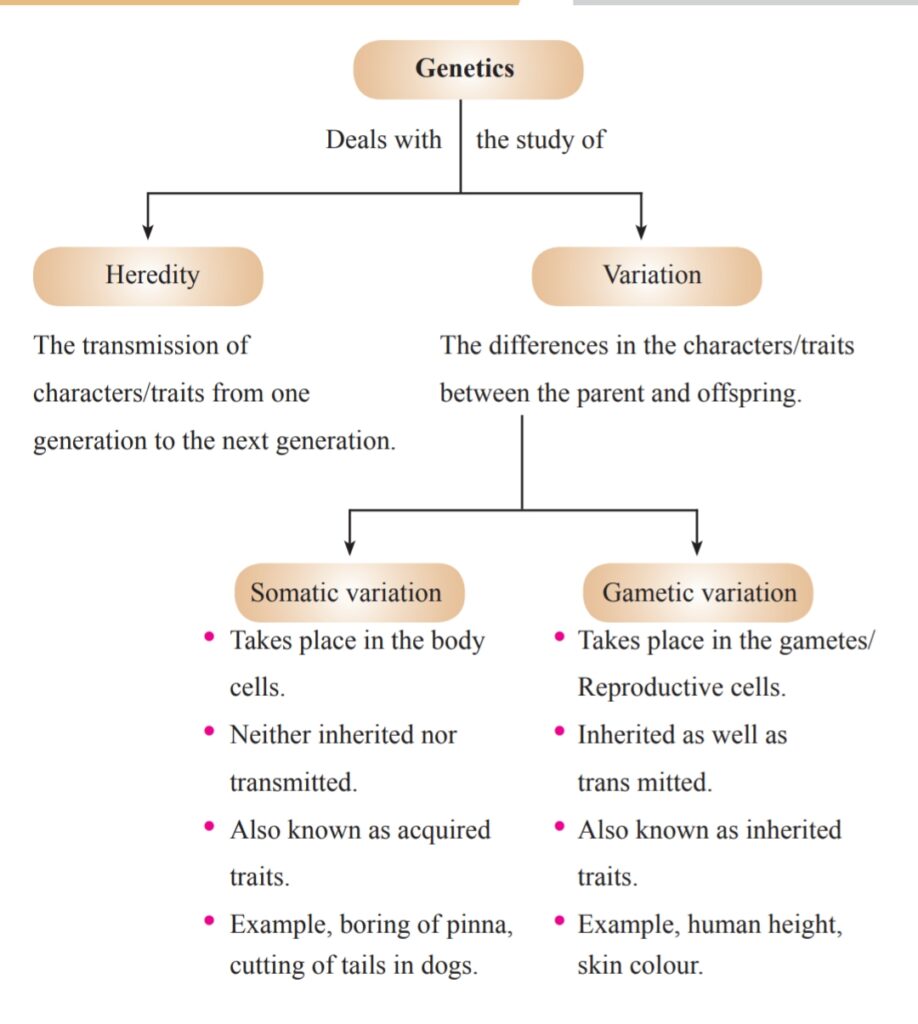
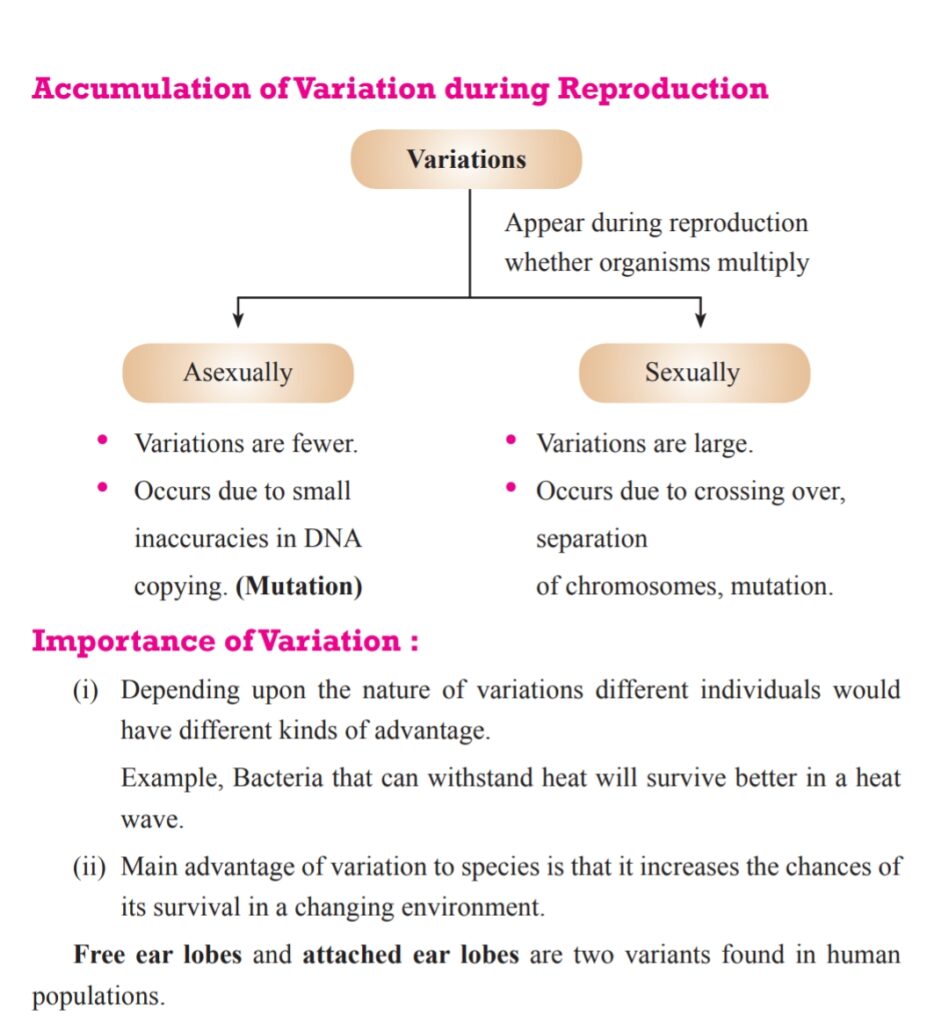
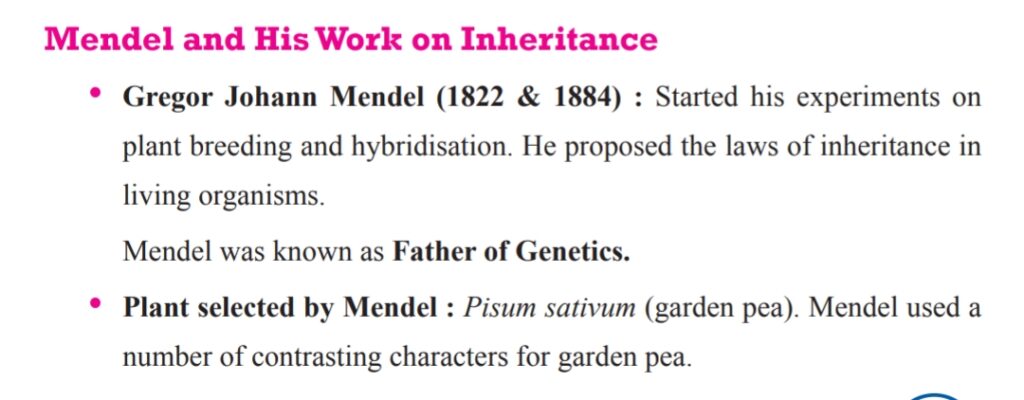
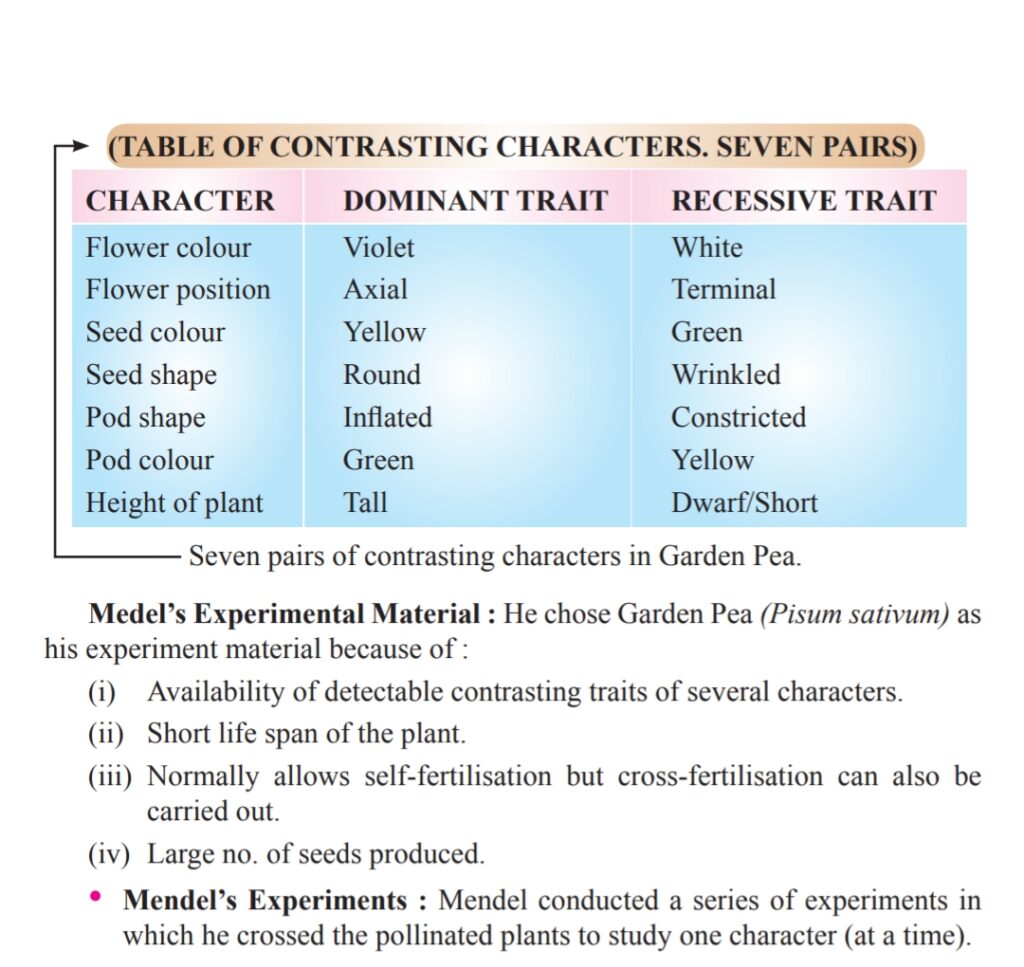
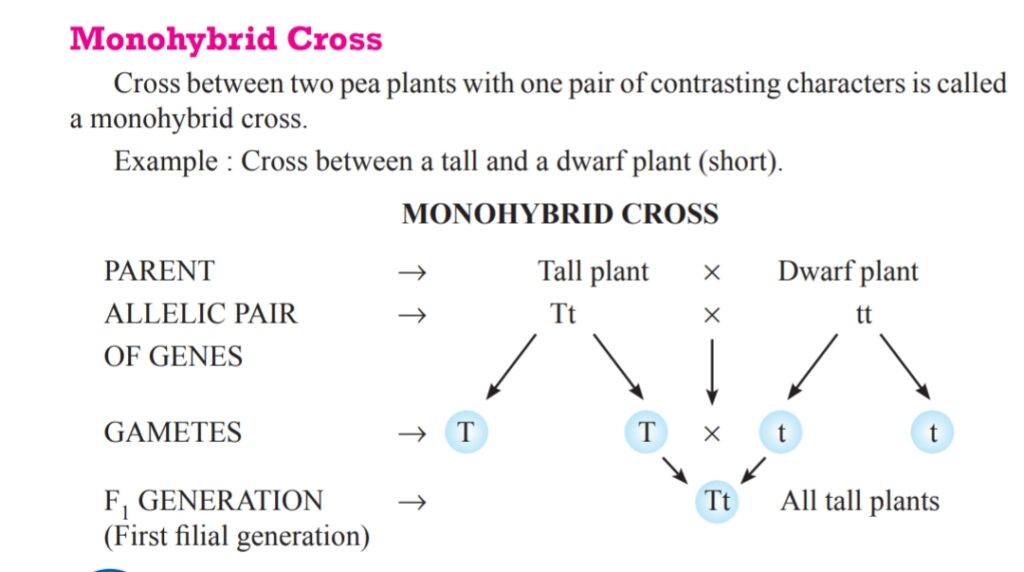
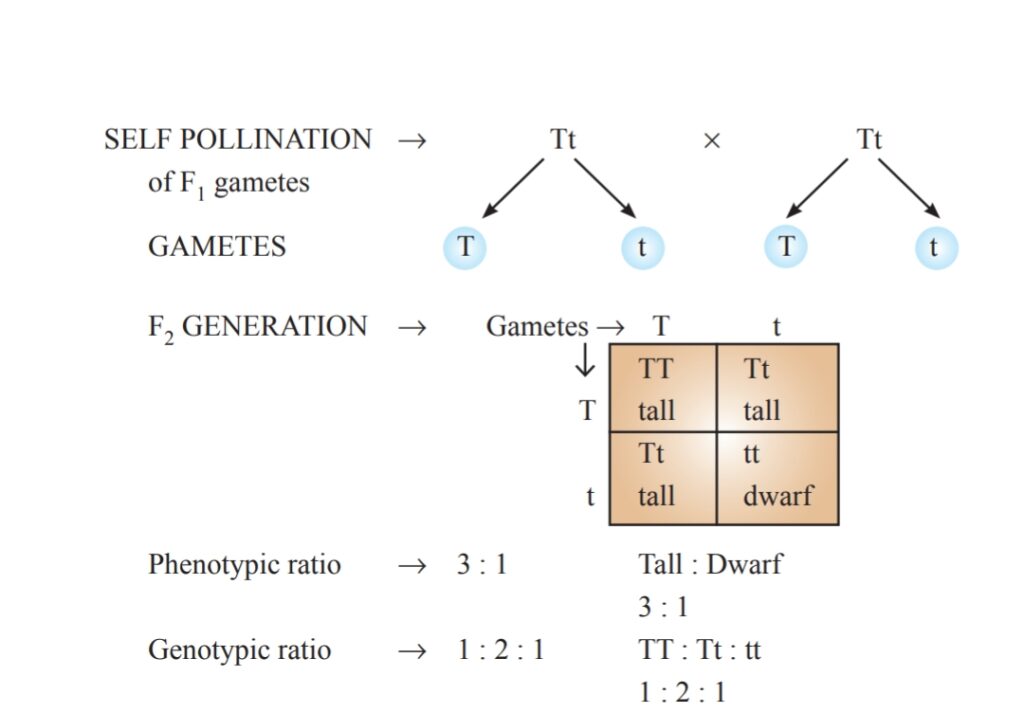
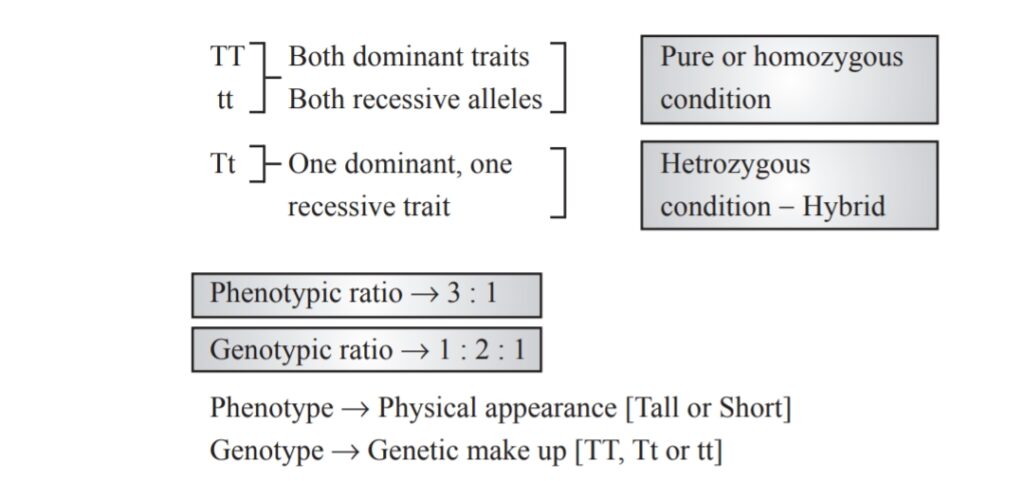
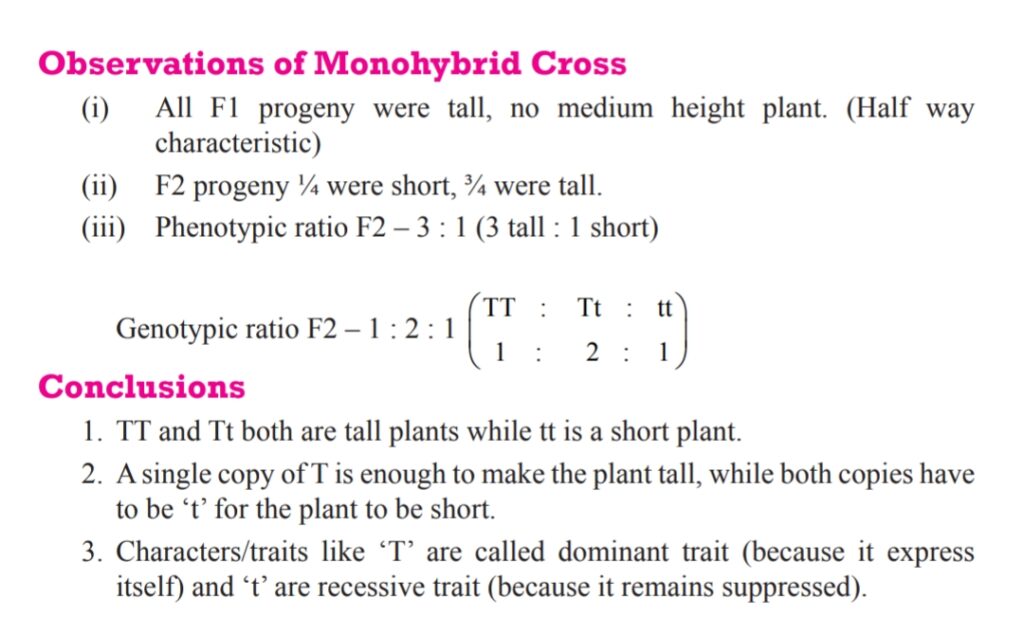
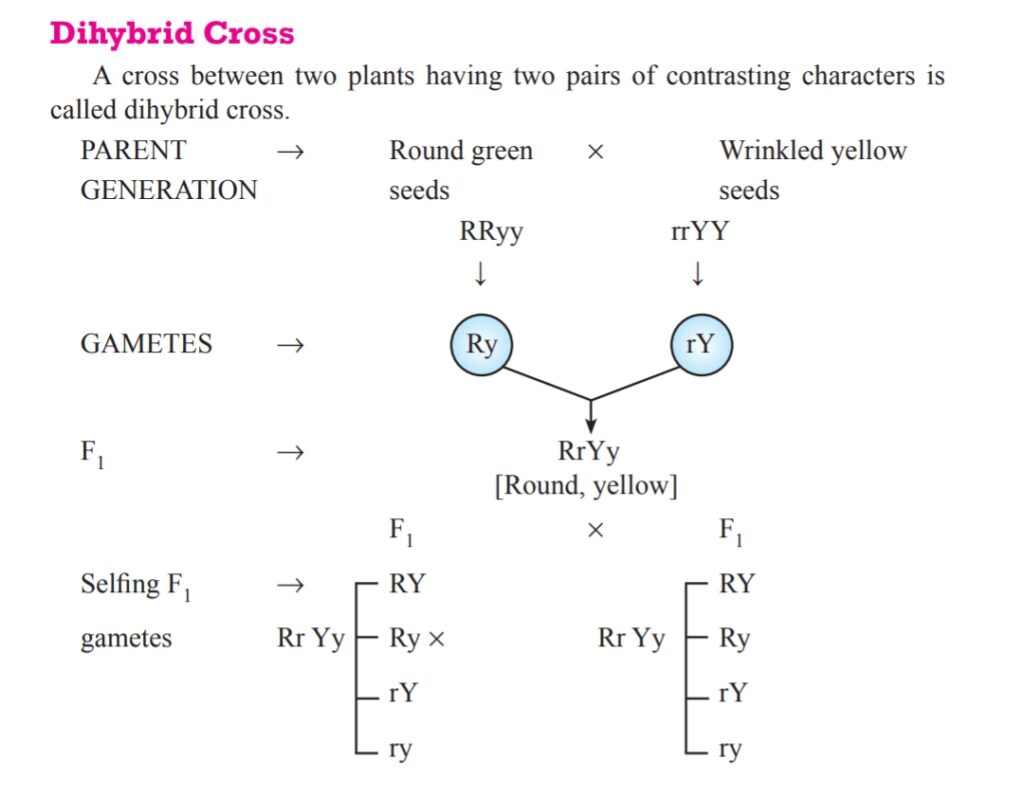
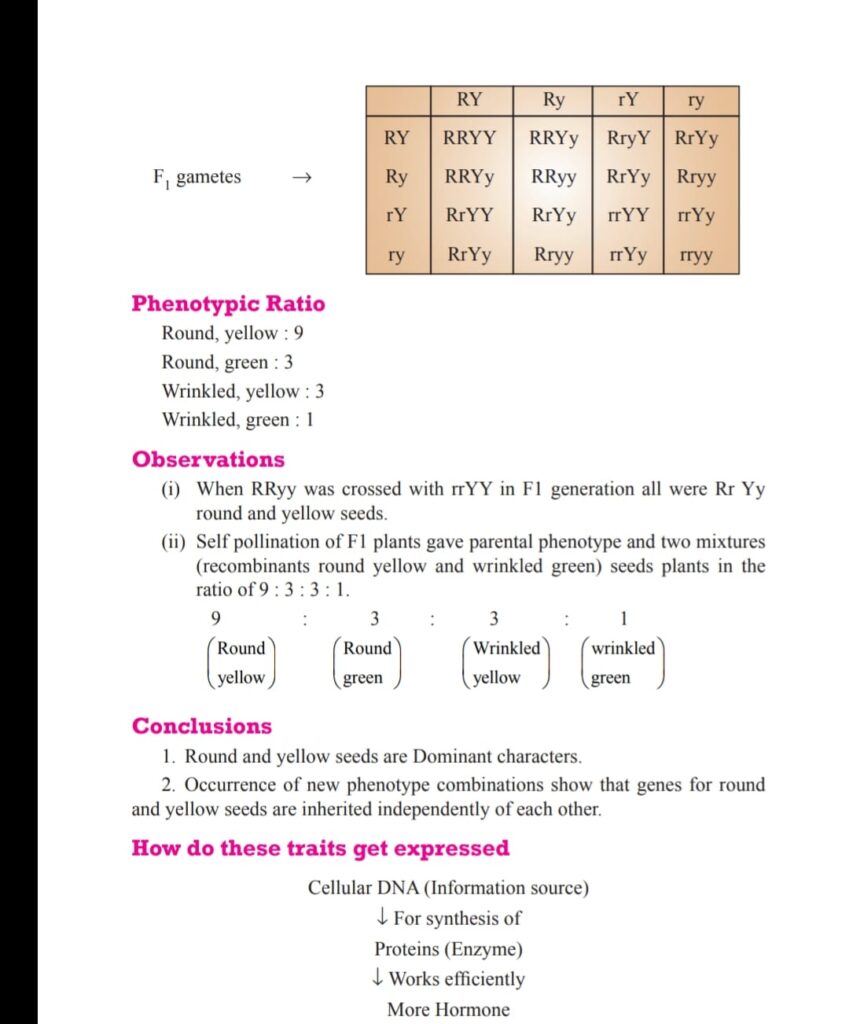
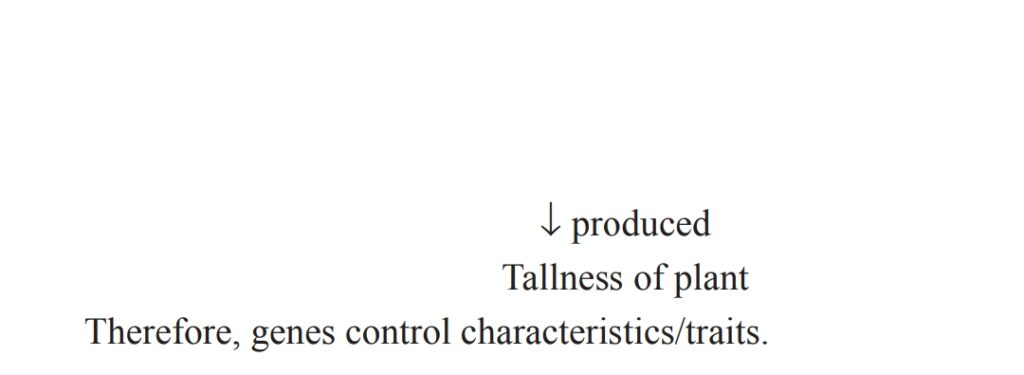
Mendal Laws of Inheritance:
The laws of heredity, also known as Mendel’s laws of inheritance, are a set of principles that describe how traits are passed down through generations:
- Law of dominance: In a heterozygous organism, the dominant allele’s characteristics are expressed over the recessive allele’s.
- Law of segregation: During gamete formation, the two alleles of a pair separate randomly. This is also known as the law of purity of gametes.
- Law of independent assortment: The inheritance of one pair of genes is independent of the inheritance of another pair.
Important Words:
- Allele: One of the alternative forms of a gene that occupies a specific position on a chromosome
- Homozygous: An organism with two copies of the same allele for a given gene
- Heterozygous: An organism with two different alleles for a given gene
- Gene pair: A gene pair is a set of two genes, or alleles, that are located at the same position on homologous chromosomes. Humans are diploid organisms, meaning that they have two alleles at each genetic locus, one from each parent.
Q. Is sex/ gender always genetically determined?
Ans. In some animals, the temperature at which fertilised eggs are kept determines whether the animals developing in the eggs will be male or female. In other animals, such as snails, individuals can change sex, indicating that sex is not genetically determined. However, in human beings,the sex of the individual is largely genetically determined. In other words, the genes inherited from our parentsdecide whether we will be boys or girls.
Q. WHAT do you mean by separation of gametes?
Ans. An example of separation of gametes in a dihybrid cross is when the alleles of one parent seperate/segregate randomly into gametes, with half of the parent’s gametes carrying each allele. This is known as Mendel’s Law of Segregation. Example RrYy separated as RY, Ry, rY,ry.
Q. How blood group of offspring is decided?
Ans. BLOOD GROUP of offspring can be determined in following ways:
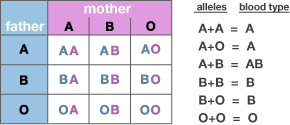
“Extra Reading – not for testing”
Heredity, the transmission of traits from parents to offspring, is a fundamental concept in the field of genetics. It explains how characteristics are inherited and how they vary among individuals within a species. The significance of heredity extends beyond mere appearance; it plays a crucial role in the survival, adaptation, and evolution of organisms. Through heredity, populations can pass on advantageous traits that enhance their ability to thrive in changing environments, making it a central theme in biological studies.
The science of genetics emerged from this understanding of heredity, focusing on the mechanisms through which traits are inherited. The groundwork for modern genetics was laid in the 19th century by Gregor Mendel, an Austrian monk whose experiments with pea plants revealed the underlying principles of inheritance. Mendel’s observations of traits such as color and shape helped establish the laws governing inheritance, which are now known as Mendelian genetics. His meticulous methodology and attention to detail allowed him to formulate the concepts of dominant and recessive traits, providing a framework that illuminated the heritable nature of genetic information.
Variability in traits is another critical aspect of heredity, as it influences the genetic diversity within populations. Genetic variation arises through mutations, gene recombination, and other processes, contributing to the array of characteristics seen in living organisms. This diversity is essential for populations to adapt and respond to environmental pressures, ensuring long-term survival. As researchers delve deeper into the complexities of heredity and genetics, they continue to uncover the intricate relationships between genes, environment, and evolutionary processes. These insights not only enlighten our understanding of biological inheritance but also have profound implications for fields such as agriculture, medicine, and conservation.
Mendel’s Laws of Inheritance
Gregor Mendel, often known as the father of genetics, proposed two foundational laws that articulate the mechanisms governing inheritance: the Law of Segregation and the Law of Independent Assortment. These laws emerged from Mendel’s systematic experiments with pea plants, where he meticulously observed the inheritance of various traits through selective breeding. His groundbreaking work laid the groundwork for modern genetics and demonstrates how specific attributes are passed from one generation to the next.
The Law of Segregation states that allele pairs separate during gamete formation, allowing offspring to inherit one allele from each parent. This separation occurs during meiosis, the process of cell division that produces gametes. For instance, when Mendel conducted monohybrid crosses involving pea plants with contrasting traits, he documented the appearance of new trait combinations in the F2 generation. Such observations guided him to conclude that each individual carries two alleles for any given trait, which segregate independently during gamete production. A visual aid, known as a Punnett square, can effectively demonstrate this concept, showing the probabilities of inheriting specific traits.
Moreover, Mendel’s Law of Independent Assortment adds another layer to our understanding of genetic inheritance. This law asserts that genes for different traits assort independently of one another during gamete formation. Through his dihybrid crosses, Mendel established that the inheritance of one trait does not influence the inheritance of another. Again, Punnett squares serve as a useful tool in this context, allowing for the visualization of potential genotype combinations produced when two traits are considered. Mendel’s insights illuminated the complexity of genetic inheritance and opened pathways for further research into heredity, making his contributions essential to the study of genetics today.
Monohybrid and Dihybrid Crosses Explained
In the study of genetics, monohybrid and dihybrid crosses serve as fundamental experimental techniques to explore the principles of inheritance as first proposed by Gregor Mendel through his work with pea plants. A monohybrid cross focuses on a single trait, typically represented by two contrasting phenotypes, such as tall versus short plants. In this experiment, Mendel took a pure breeding tall pea plant and crossed it with a pure breeding short pea plant. The F1 generation produced from this cross exhibited only the dominant trait. When the F1 plants were subsequently crossed, the F2 generation revealed a 3:1 phenotypic ratio of dominant to recessive traits, highlighting the segregation of alleles during gamete formation.
To visualize a monohybrid cross, one may utilize a Punnett square. This grid allows for the systematic combination of parental alleles, simplifying the prediction of possible offspring genotypes. The outcome of a monohybrid cross provides clear insights into the inheritance patterns of traits, showcasing Mendel’s principle of dominance.
In contrast, a dihybrid cross examines two traits simultaneously, illustrating the principle of independent assortment. For instance, consider a dihybrid cross between pea plants that differ in two characteristics: seed shape (round versus wrinkled) and seed color (yellow versus green). By crossing plants that are homozygous for both traits, Mendel was able to observe the phenotypic ratio of 9:3:3:1 in the F2 generation. Here, the Punnett square expands to accommodate the four possible allele combinations for each trait, thus facilitating a more complex prediction of offspring characteristics.
Through both monohybrid and dihybrid crosses, Mendelian genetics provides critical insights into how traits are inherited, laying the foundation for further genetic study and applications in plant breeding and genetic research.
Sex Determination and Variation in Pea Plants
In the study of Mendelian genetics, understanding the mechanisms of sex determination in pea plants is essential for comprehending genetic variation. Pea plants, like many other species, possess a chromosomal basis for sex determination, which is primarily governed by sex chromosomes. In these plants, the presence or absence of specific sex chromosomes plays a critical role in the inheritance of traits. Unlike some organisms that exhibit more complex sex determination systems, pea plants primarily utilize a straightforward method where male and female gametes contribute to reproductive outcomes.
The sex chromosomes in pea plants are crucial to determining phenotypic characteristics. Genetic variation arises not just from the combinations of these chromosomes but also from the alleles that are present on them. For instance, traits such as flower color, pod shape, and plant height are influenced by the alleles inherited from both parents. Variability in phenotypes can often be attributed to mutations, gene flow, and sexual reproduction which, through recombination, creates diverse genetic combinations as individual plants reproduce.
Additionally, the significance of genetic variation in populations cannot be overstated. It serves as a foundation for adaptability and evolution. Environmental factors play a substantial role in shaping genetic variation, as selective pressures can influence which traits are favorable under specific conditions. For example, in a changing climate, pea plants that exhibit better drought resistance will have a higher chance of survival and reproduction, thereby propagating their advantageous traits through subsequent generations.
This interplay between sex determination and genetic variation underscores the importance of studying pea plants within the framework of Mendelian genetics. By examining how these genetic principles operate in pea plants, we gain invaluable insights into broader biological concepts, enabling a comprehensive understanding of heredity, laws of inheritance, and the resultant variations that occur in natural populations.
Leave a Reply